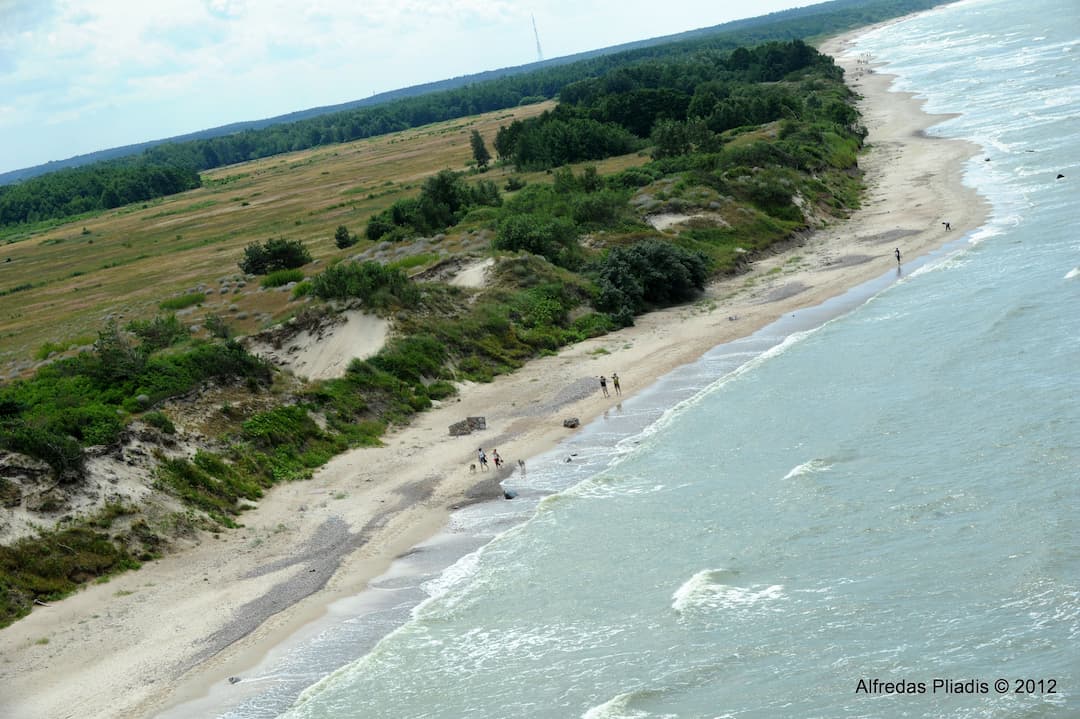The Unseen Seaside

Once you reach your destination – the centre of Karklė, a former fishermen’s town, you will be greeted by the red brick building, housing the Visitor’s Centre of the Seaside Regional Park. Inside, you will be introduced to the park itself, e.g. where to find the cormorants and how they impact the ecosystem of the seaside, or where could one find the locations and objects of cultural and natural heritage within the park.
Once you are well-informed and ready to continue your journey, walk down the path towards the seaside. The old Evangelical-Lutheran Cemetery full of traditional forged crosses and tablets lies at the shore of the Baltic Sea. Travelling northward along the seashore, you will pass one of the most torrential, yet smallest rivers – Rikinė. 2 kilometres further down the shore lies one of the most interesting natural seaside objects – the Small Cliff. It is half the size of the cliff at the Dutchman’s Cap, but it maintains greater amounts of groundwater, which is rich in various metals and dyes the cliff in a faint reddish colour. During the summers, the cliff overgrows with reeds, while the winter introduces a spectacular display of icicles, reminiscent of church organ pipes and in some areas – an extraordinary wall of ice.
From there, our route takes us onto the bicycle path leading to the bird observatory at the Plocis Lake. It is truly a remarkable spectacle to watch during bird migration season. Birds gather here by the flock during the summers.
Further down the bicycle path towards Karklė lies the last landmark of our route – the location of the former Karklė Church. The church was initially built in 1910 and served as a gathering place for believers until 1945. Following the war, a foreign military unit established a shooting range nearby and the church met the fate of many churches of the time – it was taken down.